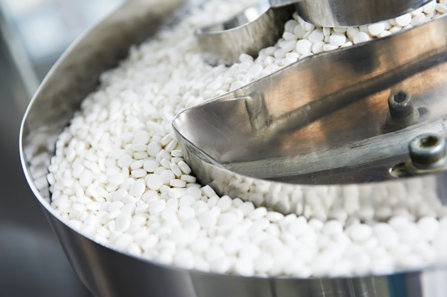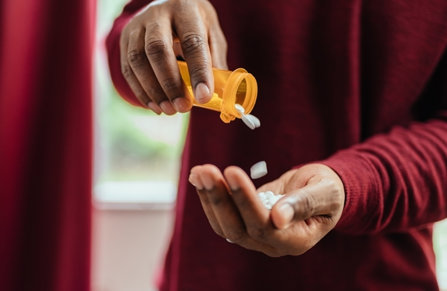
Justice for Drug Addicts
According to the National Institute on Drug Abuse, more than 130 people die from overdoses on opioid drugs every day. Such opioids include pharmaceutical pain relievers, heroin, fentanyl, and synthetic hybrid combinations of different opioid drugs. The total death toll numbers in the tens of thousands every year and experts estimate that the economic burden alone comes in at about $78.5 billion per year.
Some argue that the opioid addiction crisis is our most significant health problem at this time. At the very least, it’s one of the most severe health emergencies. So when a news report gets released showing that the very puppet masters who orchestrated the epidemic are now being found guilty in courts of law, this is a real silver lining.
Pharmaceutical Executives under Fire for Criminal Business Practices
A news piece in a May 2, 2019 edition of USA Today revealed that the billionaire founder of Insys Therapeutics and four other top executives within his company were found guilty in a sordid affair involving bribes, kickbacks, and other business skulduggery. The scheme was mainly to bribe, manipulate, coerce, or otherwise convince physicians to prescribe larger and larger amounts of fentanyl drugs to patients. (Keep in mind that fentanyl is one of the most potent, addictive, and potentially lethal opioid medicines in the world.)
According to the USA Today publication, this Boston, Massachusetts federal court case is the first ever in which a drug company CEO was successfully found guilty and was convicted of crimes against the American people.
The case revolved around the drug company’s product “Subsys,” a powerful and highly addictive, fentanyl-based nasal spray that was initially designed for cancer patients. However, from 2012 to 2015, Insys executives gave kickbacks and bribes to doctors who prescribed Subsys to non-cancer patients. It is highly illegal to prescribe a semi-restricted drug to a patient who does not meet the FDA-approved qualifications to receive that drug. Many of the doctors who committed this crime have already been convicted in the states where they practiced, but it wasn’t until recently that the hammer finally fell on the pharmaceutical company which started it all.
Why Target Opioid Manufacturers?

Some may be wondering why opioid manufacturers are under so much pressure these days. The answer to that question is simple enough. An opiate-addiction crisis cripples our nation, unlike any addiction problem the U.S. has ever seen before. And while opioid drugs have been around for decades, it wasn’t until pharmaceutical opioid manufacturers began to increase their distribution of these drugs to the American people in the late 1990s that our addiction crisis really took off.
Let’s look at some statistics on this to drive that point home. According to the U.S. Department of Health and Human Services:
- Phase one: in the late 1990s, Big Pharma companies reassured the medical community that American patients would not become addicted to opioid pain relievers. Healthcare providers began to prescribe opioid pain relievers at exponential rates, even though pain symptoms in the U.S. did not increase substantially.
- Phase two: by the mid-2000s, as doctors increased their prescribing habits with opioids, misuse of both pharmaceutical opiates and illegal opioids skyrocketed.
- Phase three: moving into the 2010s and learning that opioid painkillers were addictive, doctors began to reduce their prescribing trends to some extent. However, it was too late. Millions of Americans were already addicted to opioids, and thousands more became addicted every year.
- Phase four: in 2017, the United States Department of Health and Human Services declared a public health emergency regarding opioid addiction, closely following a similar declaration by the President of the United States himself.
While recent opioid-prescribing statistics have receded slightly, more people are dying from drug overdoses every year. According to the Centers for Disease Control and Prevention, we lost 70,237 people to drug overdoses in 2017. That figure represents more deaths than those who died in 2015 or 2016. We don’t have death toll numbers for 2018 yet, but preliminary predictions are grim.
The Opioid Addiction Epidemic by the Numbers—A Look at 2017
The U.S. Department of Health and Human Services also publishes information on the numbers and statistics of the opioid epidemic. According to their research:
- About 130 people die every day from the use of legal pharmaceutical opioids and illegal opioid drugs. The daily death rate from opioids has never been this high in our history.
- The HHS reports that 11.4 million Americans misuse prescription opioids.
- In 2017, 47,600 people died from overdosing on an opioid drug. About 15,500 of those deaths were from people who overdosed on heroin, and about 28,500 of those deaths were from people who overdosed on prescription opioids. The research does not include methadone deaths, which were also a factor in opioid overdoses.
- Also in 2017, 886,000 people used heroin, 81,000 of whom used the drug for the first time. Furthermore, about 2 million people misused opioids for the first time in 2017.
The opioid epidemic is growing. What does the future hold for our citizenry if this problem is not brought to a halt? The above figures are just for 2017, but if we add up the total overdose deaths caused by opioids since the turn of the century, we are looking at hundreds of thousands of Americans who have met miserable ends at the hands of opioid addiction—and these deaths were entirely preventable.
We Need More Than Just Lawsuits

From the previous two sections, we can see that the opioid crisis is very real, very lethal, and very concerning. This is why we need more than just lawsuits and legal repercussions with the pharma companies that began the opioid crisis. We need to help the 11 million people who misuse prescription opioids every day.
The best approach for helping a family member or loved one who struggles with an opioid habit is to get them into a residential drug and alcohol addiction treatment center. Opioid addiction is a highly toxic, life-threatening condition—a habit which strangles the person physically, mentally, and spiritually. It is not something we can medicate away with replacement drugs. It is not something the individual can overcome on his own. It’s not something the person can continue to do, even if the drugs he is using are legal. If you know someone who suffers from opioid dependency, help him find and enter a residential treatment center. It will save his life.
Sources:
- https://www.drugabuse.gov/drugs-abuse/opioids/opioid-overdose-crisis
- https://www.usatoday.com/story/news/nation/2019/05/02/insys-therapeutics-john-kapoor-found-guilty-fentanyl-bribery-case/3561518002/
- https://www.hhs.gov/opioids/about-the-epidemic/index.html
- https://www.cdc.gov/drugoverdose/data/statedeaths.html
Reviewed by Claire Pinelli, ICAADC, CCS, RAS, MCAP


